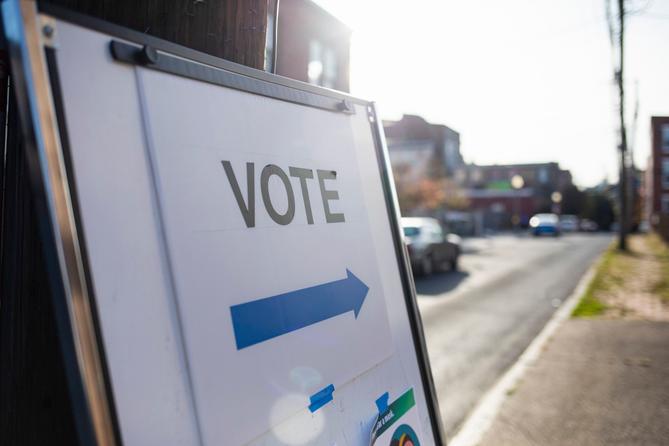Spotlight PA is an independent, nonpartisan newsroom powered by The Philadelphia Inquirer in partnership with PennLive/The Patriot-News, TribLIVE/Pittsburgh Tribune-Review, and WITF Public Media. Sign up for our free newsletters.
HARRISBURG — On May 17, Democrats and Republicans in Pennsylvania will vote for candidates running in local and statewide races. The victors will compete in general election races that will impact abortion access, climate change policy, and other crucial issues.
Spotlight PA assembled all the things that you’ll need to know before you head to the polls:
Make sure you can vote
First, make sure that you’re registered to vote. You can check your registration status here.
If you’re not registered, then you’ve missed the deadline for the primary but can still register to participate in the general election in November.
To participate in the Democratic or Republican primary, you have to be registered to that party. You can check which party you’re registered to here.
Unaffiliated voters won’t be able to vote for Democratic or Republican candidates in the primary, but they can still vote on ballot questions (there are four in Philadelphia, for example) or in special elections (like a state Senate race in Philadelphia) held on that date. Look for a sample ballot on your county’s election website or call the office to confirm whether any of these questions will appear on the ballot.
Visit vote.pa.gov for more information.
Make a plan to cast a ballot
The deadline to request a mail ballot has passed. If you have requested one, be sure to return it as soon as possible. The fastest way to do this is to return it to your county’s election office or another designated drop-off location. Locate drop-off locations or your county election offices here.
You can also drop a mail ballot in the mail. But beware: Your ballot must be received by your county election office by 8 p.m. on Election Day or it won’t be counted.
If you’re going to vote in person, you can locate your polling place here. Polls are open from 7 a.m. to 8 p.m.
If it’s your first time voting in person, bring a state-issued photo ID. Here’s a list of acceptable forms of ID.
Before you vote, you can see what your ballot will look like by going to your county’s election website or using this tool created by the League of Women Voters, a national nonpartisan group that advocates for voting rights.
You can read more about voting in the primaries here and using mail ballots here.
What’s on the ballot
Democratic and Republican voters will select which candidates will represent their parties in the general election this fall in local and statewide races, potentially shifting the balance of power within the General Assembly, governor’s office, and federal government. These offices include:
Governor
Lieutenant governor
U.S. senator
Congressional representative
State House representative
State senator (only lawmakers in even-number districts are up for reelection)
Nine people are running for the Republican gubernatorial nomination, while just one Democrat will appear on that party’s ballot. Democratic Gov. Tom Wolf, who has often served as a foil to the Republican-led General Assembly, is term-limited by the state constitution. His departure provides an opportunity for Republicans to take over the executive branch.
>> To learn more about the gubernatorial candidates and their different positions, read Spotlight PA’s guide.
Four Democrats and seven Republicans are running for Pennsylvania’s open U.S. Senate seat. That race has the potential to affect the balance of power in Washington, D.C., where Democrats need to keep all their seats in order to maintain their voting majority. The seat is currently held by Pat Toomey (R., Pennsylvania) who announced his retirement in late 2020.
>> Read more about the U.S. Senate candidates here.
Pennsylvania’s redrawn legislative lines also have the potential to shift the balance of power in the General Assembly, at least in the lower chamber. Currently, 90 Democrats and 113 Republicans serve in the state House. However, nonpartisan analysis has projected that the new district lines — altered to account for population growth and demographic change over the past decade — could result in a more even split, with about 100 representatives from each major party.
Because state House and Senate districts are small enough to be politically cohesive, primaries are often the final say in an election. Of the state’s 253 legislative districts, only 15% of the seats are considered competitive — meaning the number of voters in each party is evenly distributed enough that any party could win.
>> See which incumbents are facing primary challengers here.
WHILE YOU’RE HERE… If you learned something from this story, pay it forward and become a member of Spotlight PA so someone else can in the future at spotlightpa.org/donate. Spotlight PA is funded by foundations and readers like you who are committed to accountability journalism that gets results.

